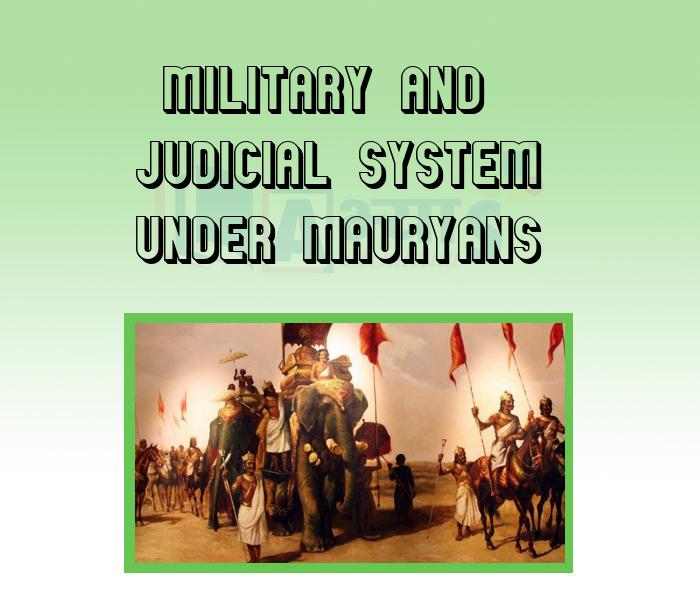Military and Judicial System Under Mauryans










Military and Judicial System Under Mauryans
Military Administration
Various Military Committees
(i) First Committee-Committee to look after Infantry.
(ii) Second Committee-Committee to look after Cavalry.
(iii) Third Committee-Committee to take care of the Army.
(iv) Fourth Committee-Committee to oversee.
(v) Fifth / Fifth Committee-Committee to take care of the Navy.
(vi) Sixth Committee--The Committee meeting the requirements of the Army.
In Mauryan Judicial System ____________ are the penalties that Kautilya has proposed | |||
| Right Option : D | |||
| View Explanation | |||
Match the following
| |||||||||||||||
| Right Option : A | |||||||||||||||
| View Explanation | |||||||||||||||
According to the description given by the Greeks, the Mauryas had a total of _______ lakh footmen | |||
| Right Option : A | |||
| View Explanation | |||
Students / Parents Reviews [10]
Abhyas is a complete education Institute. Here extreme care is taken by teacher with the help of regular exam. Extra classes also conducted by the institute, if the student is weak.

Om Umang
10thMy experience was very good with Abhyas academy. I am studying here from 6th class and I am satisfied by its results in my life. I improved a lot here ahead of school syllabus.

Ayan Ghosh
8thOne of the best institutes to develope a child interest in studies.Provides SST and English knowledge also unlike other institutes. Teachers are co operative and friendly online tests andPPT develope practical knowledge also.

Aman Kumar Shrivastava
10thMy experience with Abhyas academy is very good. I did not think that my every subject coming here will be so strong. The main thing is that the online tests had made me learn here more things.

Hiya Gupta
8thI have spent a wonderful time in Abhyas academy. It has made my reasoning more apt, English more stronger and Maths an interesting subject for me. It has given me a habbit of self studying

Yatharthi Sharma
10thBeing a parent, I saw my daughter improvement in her studies by seeing a good result in all day to day compititive exam TMO, NSO, IEO etc and as well as studies. I have got a fruitful result from my daughter.

Prisha Gupta
8thIt was a good experience with Abhyas Academy. I even faced problems in starting but slowly and steadily overcomed. Especially reasoning classes helped me a lot.

Cheshta
10thMy experience with Abhyas is very good. I have learnt many things here like vedic maths and reasoning also. Teachers here first take our doubts and then there are assignments to verify our weak points.

Shivam Rana
7thIt has a great methodology. Students here can get analysis to their test quickly.We can learn easily through PPTs and the testing methods are good. We know that where we have to practice

Barkha Arora
10thA marvelous experience with Abhyas. I am glad to share that my ward has achieved more than enough at the Ambala ABHYAS centre. Years have passed on and more and more he has gained. May the centre flourish and develop day by day by the grace of God.
